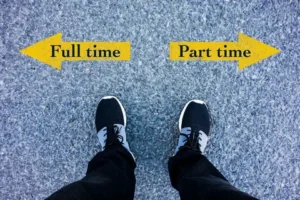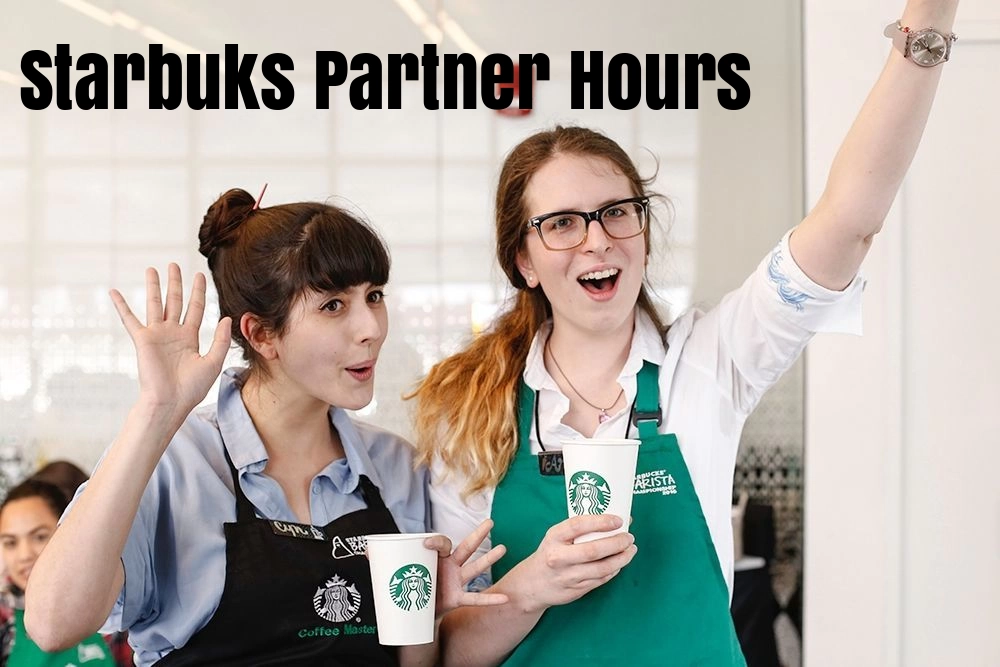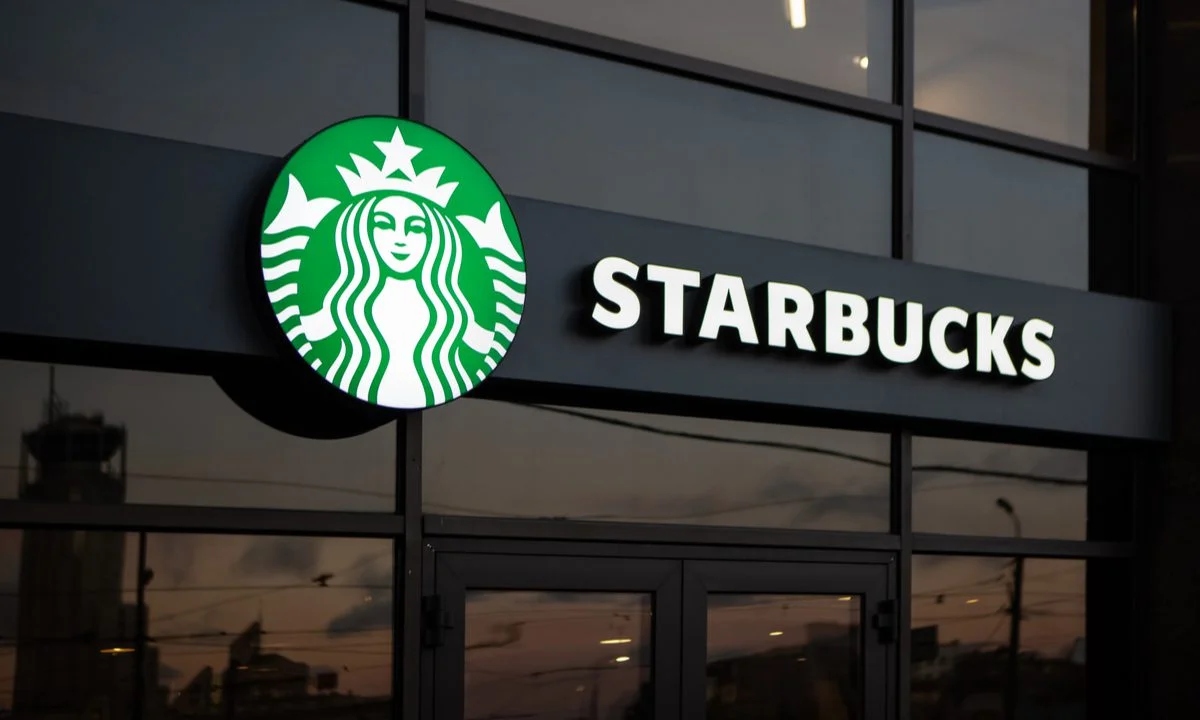Starbucks refers to its employees as “partners” rather than using traditional titles like employees or associates. This terminology reflects the company’s mission to create a collaborative environment where everyone is invested in the success of the business.
Partner hours at Starbucks are the scheduled work hours for partners (employees) at Starbucks retail locations, roasting plants, and corporate offices. These hours differ from the traditional concept of employee hours in several ways:
-
Equity in the Business: Partners are considered to have an equity stake in the company, fostering a sense of shared ownership and responsibility for its growth and success.
-
Benefits and Perks: Even part-time partners are eligible for benefits like health insurance, stock options, and free beverages while on shift, which is not common practice in many other retail or food service jobs.
-
Collaborative Culture: The partner title emphasizes a team-oriented approach where everyone’s contributions are valued, and decisions are made collaboratively rather than through a strict top-down hierarchy.
Starbucks strives to provide partners with consistent and reliable schedules while also accommodating their personal needs and preferences whenever possible.
Starbucks Partner Hour Requirements
As a Starbucks partner (employee), the minimum hour requirements vary based on your position and employment status. Generally, part-time partners are required to work a minimum of 16-24 hours per week, while full-time partners must work at least 30-40 hours per week.
For baristas and shift supervisors, the minimum weekly hours are typically 20-25 for part-time and 35-40 for full-time. Store managers and assistant managers are usually considered full-time and are expected to work around 40 hours per week.
Partners must average at least 20 hours per week to qualify for benefits, with more comprehensive coverage available at higher hour thresholds.
It’s important to note that the specific hour requirements may vary slightly by region or store, as scheduling is influenced by factors like store traffic, staffing needs, and local labor laws. Starbucks aims to provide partners with a consistent and reliable work schedule while accommodating individual preferences and availability when possible.
Scheduling Partner Hours
Starbucks takes a flexible approach to scheduling partner hours, allowing a degree of autonomy and work-life balance for its employees. However, the specific scheduling practices may vary across different Starbucks locations and regions.
Most Starbucks stores create weekly or biweekly schedules, taking into account factors such as anticipated customer traffic, operational needs, and partner availability.
Partners can often request schedule changes or shift swaps through designated channels, such as communicating directly with their shift supervisors or managers.
Additionally, some Starbucks locations may offer partners the opportunity to pick up extra shifts or swap shifts with colleagues, facilitating greater flexibility in managing their work hours. This approach allows partners to balance their work commitments with personal responsibilities or preferences.
It’s worth noting that during peak periods or busy seasons, scheduling flexibility may be somewhat limited to ensure sufficient staffing levels and smooth operations. However, Starbucks generally strives to foster a supportive work environment that recognizes the diverse needs of its partners.
Benefits of Being a Starbucks Partner
As a Starbucks partner (employee), you gain access to a comprehensive benefits package that includes health insurance, stock options, partner discounts, and tuition assistance. These benefits are designed to support your well-being and professional growth.
Health Insurance: Starbucks offers affordable health insurance plans to partners working at least 20 hours per week on average. The coverage includes medical, dental, and vision plans, providing you and your family with essential healthcare services.
Stock Options: Starbucks believes in sharing its success with its partners. Eligible partners can participate in the company’s stock plan, allowing them to become shareholders and potentially benefit from the company’s growth and profitability.
Partner Discounts: One of the perks of being a Starbucks partner is enjoying discounts on various Starbucks products and services. This includes discounts on food, beverages, and merchandise at Starbucks locations, making it easier for you to enjoy the company’s offerings.
Tuition Assistance: Starbucks recognizes the importance of education and offers tuition assistance programs to its partners. Through partnerships with online universities and colleges, partners can pursue undergraduate and graduate degrees while receiving financial support from the company.
These benefits not only enhance the overall compensation package but also demonstrate Starbucks’ commitment to its partners’ well-being, personal growth, and long-term success.
Tracking Partner Hours
Starbucks has implemented various methods to help partners (employees) accurately track their hours worked. One primary tool is the Global Labor System (GLS), an online platform accessible to partners through any internet-connected device. Partners can log in to GLS and view their scheduled shifts, clock in and out for their shifts, and see a running total of their hours for the pay period.
In addition to GLS, many stores utilize time clocks or computer terminals for partners to clock in and out. These physical time-tracking devices sync with GLS to ensure hours are recorded properly. Some stores may also use mobile apps or other digital solutions for partners to clock in remotely or view their schedules.
Manager oversight plays a crucial role in tracking partner hours. Store managers regularly review time records in GLS to ensure accuracy and compliance with scheduling policies. They can make corrections or adjustments as needed and approve timesheets before payroll processing.
Partners are responsible for accurately clocking in and out for all shifts, breaks, and meal periods. Forgetting to clock in or out, or clocking in for another partner, can result in payroll errors and potential disciplinary action. Starbucks emphasizes the importance of honest and ethical time reporting to maintain fair labor practices.
Part-Time vs Full-Time Partner Hours

At Starbucks, partners (employees) can work either part-time or full-time schedules. The main difference lies in the number of hours worked per week and the benefits eligibility.
Part-Time Partners
Part-time partners at Starbucks typically work fewer than 25 hours per week. The exact number of hours can vary based on the store’s needs and the partner’s availability. Part-time partners are eligible for certain benefits, such as:
- Discounted stock purchase plan
- Partner discount on merchandise and food items
- Access to the Starbucks Partner Hub (an online resource for partners)
- Paid sick leave and vacation time (accrued based on hours worked)
However, part-time partners may not qualify for some of the more comprehensive benefits offered to full-time partners, such as health insurance coverage.
Full-Time Partners
Full-time partners at Starbucks are typically scheduled to work 30 hours or more per week. In addition to the benefits available to part-time partners, full-time partners are eligible for:
- Comprehensive health insurance coverage (medical, dental, vision)
- Life insurance
- Disability benefits
- Paid holidays
- Retirement savings plan (401(k) with company match)
Full-time partners often have more consistent schedules and may have greater opportunities for advancement within the company.
Pros and Cons
Part-time employment at Starbucks can be advantageous for those seeking flexibility, such as students or individuals with other commitments. However, the lack of comprehensive benefits may be a drawback for some. Full-time employment offers more stability, better benefits, and potentially higher earning potential, but it may not be as flexible as a part-time schedule.
Ultimately, the choice between part-time and full-time employment at Starbucks depends on an individual’s personal circumstances, financial needs, and lifestyle preferences.
Changes to Partner Hour Policies
In recent years, Starbucks has implemented several changes to its partner hour policies in an effort to better support its workforce and align with evolving industry standards. One of the most significant changes has been the increase in paid sick time and parental leave benefits for partners (Starbucks’ term for employees).
Effective January 2022, Starbucks expanded its paid sick time policy to provide all partners with up to 5 days of paid sick leave per year, regardless of tenure or number of hours worked. Previously, partners had to accrue paid sick time based on hours worked, which could leave some part-time or newer partners without access to paid sick days.
Additionally, Starbucks enhanced its parental leave policy in October 2023. All birth parents employed at Starbucks corporate stores or roasting plants are now eligible for 18 weeks of paid parental leave, an increase from the previous 12 weeks. Non-birth parents are eligible for 6 weeks of paid parental leave, up from the previous 4 weeks.
These changes were made in recognition of the importance of work-life balance and to support partners during significant life events. Starbucks cited the need to remain competitive in attracting and retaining top talent, as well as aligning with evolving societal expectations around family-friendly workplace policies.
However, Starbucks maintains that investing in its partners is crucial for long-term success and customer satisfaction.
Differences Across Regions/Stores

Starbucks has a fairly standardized partner hour policy across its corporate-owned stores. However, there can be some variations depending on the region, state laws, and whether the location is in an urban or rural area.
Regional Differences
While the core policies are consistent, some regions may have slightly different interpretations or implementations based on local labor laws, union agreements, or regional management decisions. For example, certain regions may offer more generous sick leave policies or have variations in overtime rules.
State Laws
Since employment laws can vary from state to state, Starbucks must comply with the specific regulations in each location. This can lead to differences in areas such as minimum wage rates, break requirements, and overtime calculations. Stores in states with more stringent labor laws may need to adjust their partner hour policies accordingly.
Urban vs. Rural
The dynamics of urban and rural areas can also influence partner hour policies. Urban stores, particularly those in major cities, may face higher costs of living and more competition for talent, leading to potential adjustments in compensation or scheduling practices. Conversely, rural stores may have different staffing needs and work schedules based on the local customer traffic patterns and demographics.
Store-Level Variations
While Starbucks aims for consistency, individual store managers may have some flexibility in implementing partner hour policies based on their specific staffing needs, budget constraints, and local circumstances. This could result in variations in areas such as shift scheduling, overtime allocation, or break patterns, as long as they comply with corporate guidelines and local regulations.
It’s essential for partners to familiarize themselves with the specific policies and practices at their store location, as well as any regional or state-level variations that may apply. Open communication with store management and regular review of policy updates can help ensure compliance and understanding of partner hour expectations.
Partner Hour Compliance and Issues
Ensuring partners receive their allotted hours as per their employment agreement is crucial for maintaining a satisfied workforce. Starbucks has procedures in place to address issues such as underemployment, where partners are not receiving sufficient hours to meet their expected income needs.
If a partner feels they are not receiving adequate hours, they can raise the issue with their manager or partner resources representative. Disputes may arise due to miscommunication, improper scheduling practices, or other factors. In such cases, Starbucks aims to resolve the matter through open dialogue, reviewing scheduling records, and making necessary adjustments to ensure partners receive their rightful hours moving forward.
Starbucks also provides guidance and training to store managers on proper scheduling practices, labor budgeting, and ensuring compliance with partner hour policies. This helps prevent issues from occurring in the first place and promotes fair and consistent treatment of partners across different store locations.
Starbucks Partner Hours vs Other Companies
Starbucks has long been considered an industry leader in providing generous benefits and employee-friendly policies compared to many competitors in the retail and food service sectors. When it comes to partner hours (Starbucks’ term for employee hours), the company’s approach stands out in several ways.
One key advantage is Starbucks’ commitment to offering both part-time and full-time partners the opportunity to work enough hours to qualify for benefits like health insurance and stock options. Many retail and restaurant chains heavily rely on part-time workers without benefits. At Starbucks, even part-timers can accrue enough hours to gain access to valuable benefits.
Additionally, Starbucks has been proactive in adjusting its partner hour policies to meet the evolving needs of its workforce. For example, during the COVID-19 pandemic, the company implemented temporary increases in paid leave and partner hours to support those affected by the crisis. Such responsive policies have helped Starbucks cultivate a reputation as a comparatively employee-centric company.
However, Starbucks’ approach is not without downsides relative to some competitors. And while Starbucks offers pathways to benefits for part-timers, some companies simply provide benefits to all employees regardless of weekly hours worked.
Overall, while Starbucks may not lead every metric, its partner hour policies and emphasis on creating quality part-time and full-time jobs help differentiate it from many other chains that rely heavily on minimum wage, limited-hour workforces without benefits. This approach aligns with Starbucks’ broader mission of cultivating an engaged, well-treated team of “partners.”




